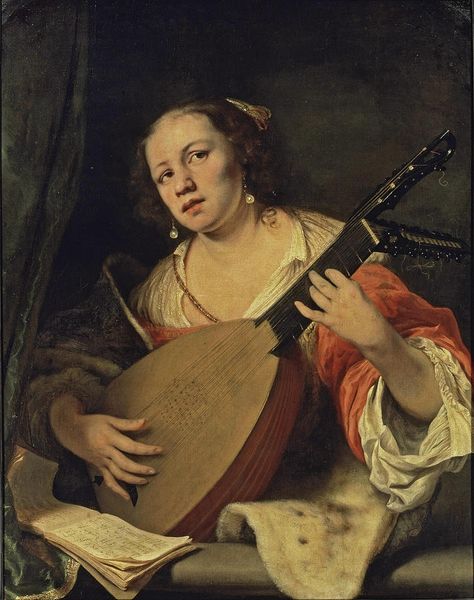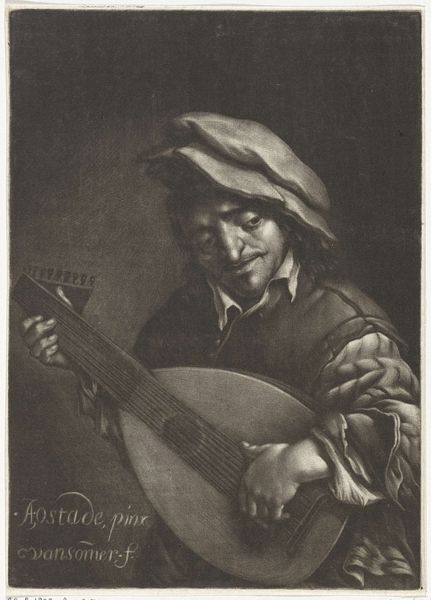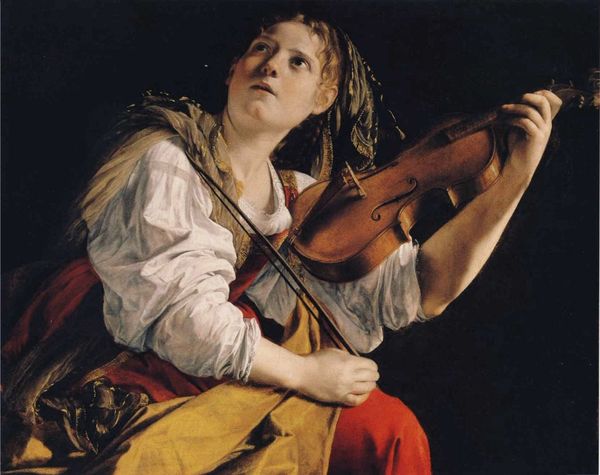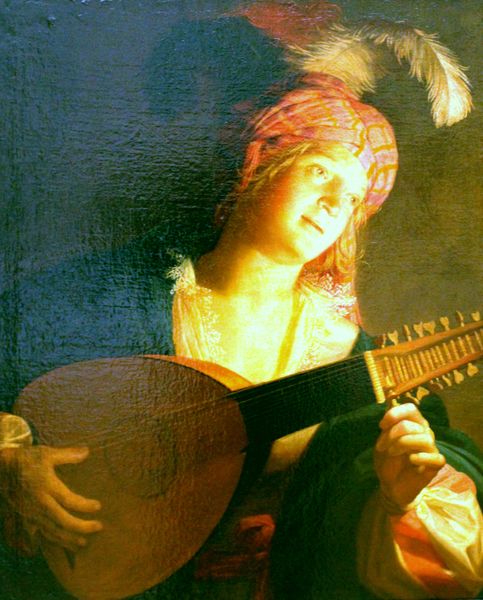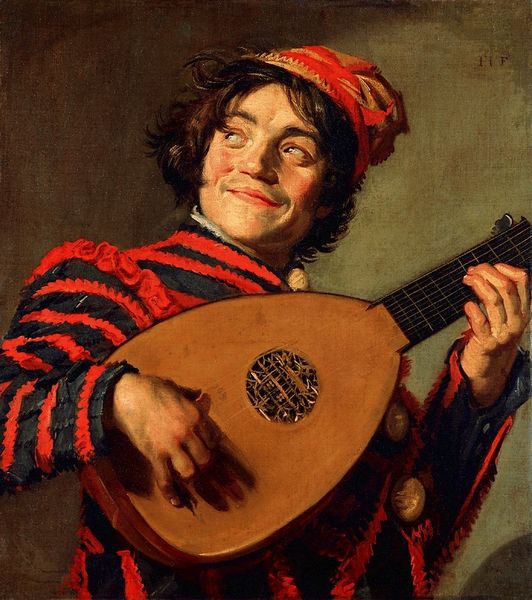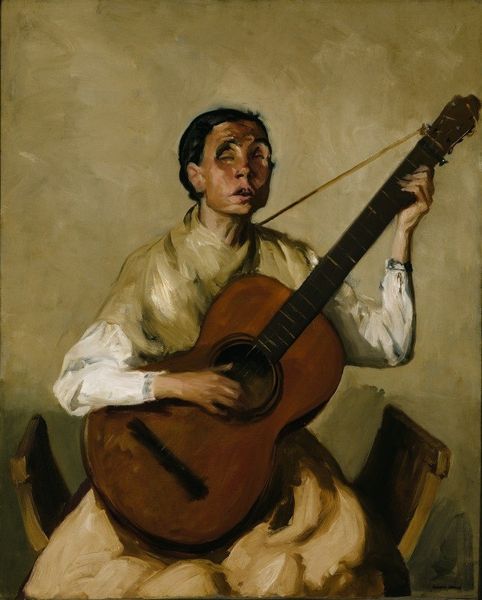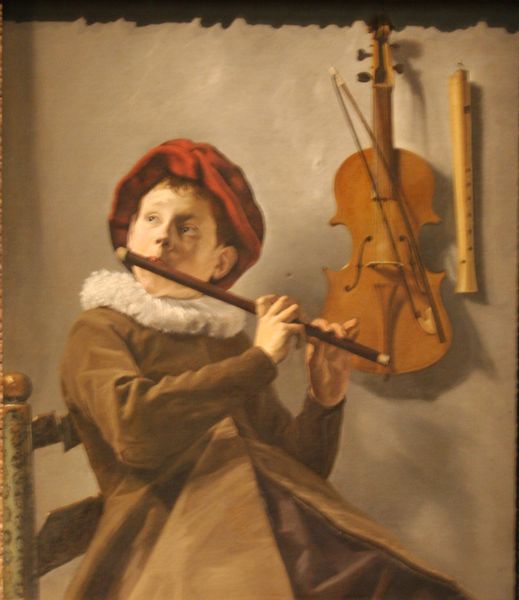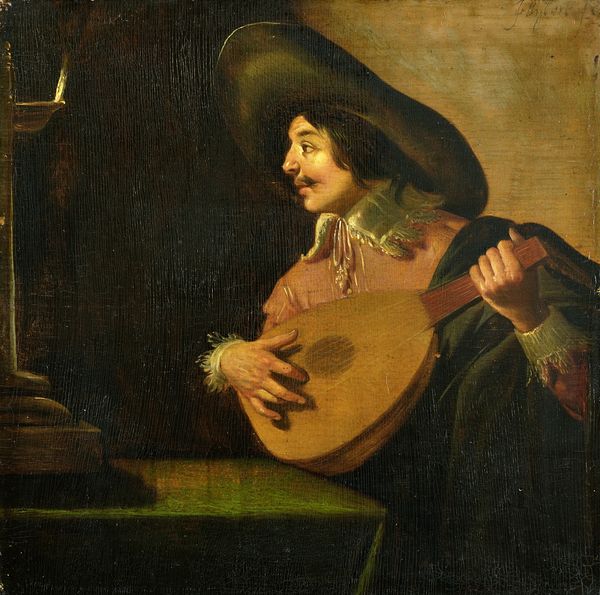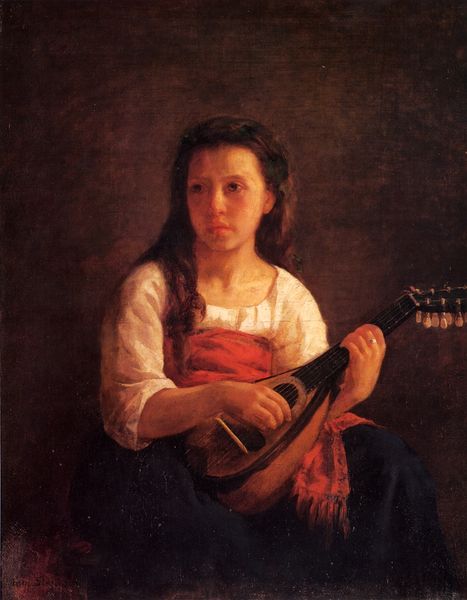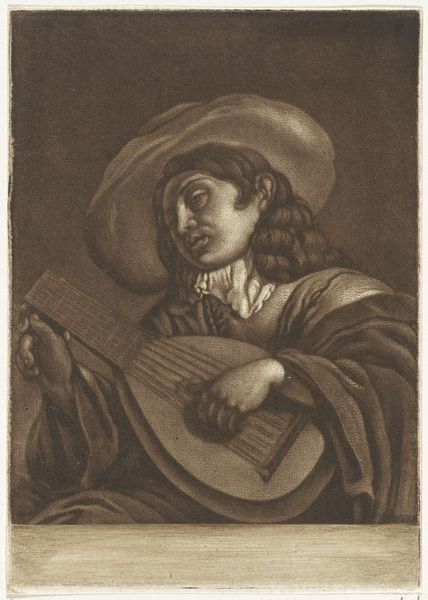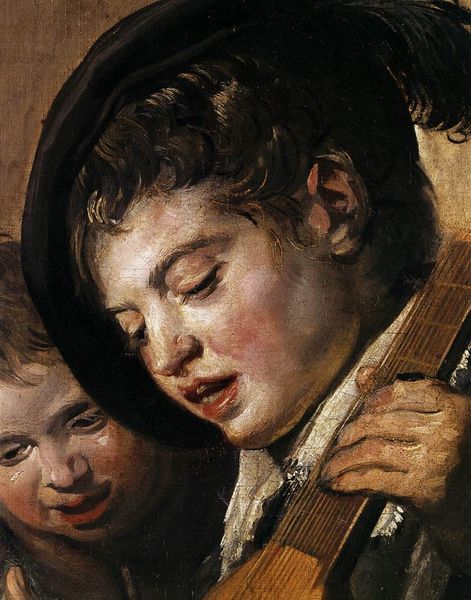
painting, oil-paint
#
portrait
#
baroque
#
painting
#
oil-paint
#
genre-painting
#
musical-instrument
#
italian-renaissance
Copyright: Public domain
Curator: Before us hangs Caravaggio’s “The Lute Player,” painted around 1597. It’s an oil on canvas, a superb example of Italian Renaissance art, specifically a genre painting portraying a musician. Editor: I'm immediately struck by the melancholy air. There’s something incredibly poignant about the young man’s expression. It transcends mere technical skill; it feels deeply personal. Curator: Indeed. Genre paintings like this offered artists an opportunity to capture everyday life, but through Caravaggio’s lens, we get not just observation, but narrative. Notice how the lute isn't just a musical instrument; it becomes a symbol. Music was heavily patronized in that era, tied to diplomatic gatherings. The painting might allude to peace through harmonic concord. Editor: The headscarf, the delicate curls peeking out... it suggests youth, inexperience, perhaps even vulnerability. The lute itself is incredibly detailed; each string rendered with loving care. To me, that level of precision emphasizes a certain innocence, almost as if this is his only safe place, the world to which he escapes. Curator: It is thought this painting speaks to Caravaggio's socio-political sphere. Artistically, there's tension between reality and illusion; look how the light almost violently thrusts some elements forward, while simultaneously obscuring others. Such pieces gained in prominence because powerful families like the Medicis supported artists making visually spectacular and politically-charged works. Editor: And the fruit! The bowl near his elbow. Some are ripe, ready to be savored. Others look bruised. Doesn’t it point toward fleeting beauty, the impermanence of pleasure, maybe even lost potential? It creates another layer, deepening that overall sense of melancholic longing. Curator: Absolutely, iconography allows this piece to speak to viewers across centuries! While still life was a popular topic, it also spoke about larger anxieties. Artists like Caravaggio found success navigating complicated political spaces. Editor: Considering his mastery of symbolism, Caravaggio clearly uses visual metaphor, enriching the viewing experience far beyond surface level aesthetics. That look in his eyes sticks with you. Curator: A truly fascinating piece, it underscores the powerful dialogues one artist can achieve in understanding the public sentiment and political climate around him. Editor: And with potent symbols resonating so deeply across the ages. It continues to pose evocative questions, even now.
Comments
No comments
Be the first to comment and join the conversation on the ultimate creative platform.

